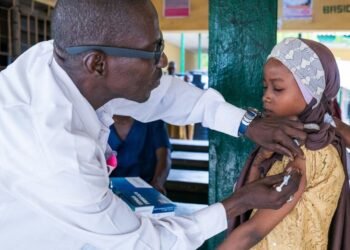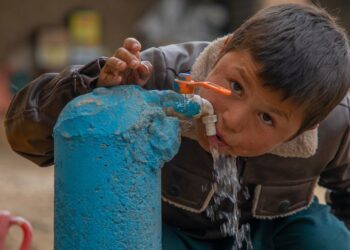An estimated 10.3 million people contracted measles in 2023, marking a 20% increase from 2022, according to a new report by the World Health Organization (WHO) and the U.S. Centers for Disease Control and Prevention (CDC).
The sharp rise underscores alarming declines in vaccination coverage worldwide, endangering the health of millions.
“The number of measles infections are rising around the globe, endangering lives and health,” said CDC Director Mandy Cohen. “The measles vaccine is our best protection against the virus, and we must continue to invest in efforts to increase access.”
Vaccine Coverage Falters
Measles remains one of the most contagious diseases known, and achieving at least 95% coverage with two doses of the measles/rubella vaccine is critical to prevent outbreaks. However, the global vaccination rate has dropped significantly since the COVID-19 pandemic disrupted health systems.
In 2023, only 83% of children worldwide received their first dose of the measles vaccine, unchanged from 2022 but down from 86% before the pandemic. The second-dose coverage was even lower, with just 74% of children receiving it last year.
WHO chief Tedros Adhanom Ghebreyesus highlighted the long-term importance of vaccination.
“Measles vaccine has saved more lives than any other vaccine in the past 50 years. To save even more lives and stop this deadly virus from harming the most vulnerable, we must invest in immunisation for every person, no matter where they live.”
WHO chief Tedros Adhanom Ghebreyesus
Outbreaks Across Continents
In 2023, gaps in vaccination coverage led to large-scale outbreaks in 57 countries, up from 36 the previous year. The WHO/CDC report indicated that while every region except the Americas was affected, the African region accounted for nearly half of these significant outbreaks.
The highly contagious virus, which causes fever, rash, and flu-like symptoms, poses a particularly severe risk to young children.
In 2023, it is estimated that 107,500 people, most of them under the age of five, died from measles. This figure, while representing an 8% decrease from 2022, remains a stark reminder of the disease’s deadly impact.
Global Response Under Pressure
The slight decline in mortality, despite the surge in cases, is attributed to the better nutritional status and access to health services in certain countries where outbreaks occurred. However, WHO and CDC officials stress that “far too many children are still dying from this preventable disease.”

The goal of eliminating measles as an endemic threat by 2030 now appears increasingly at risk. As of the end of 2023, 82 countries had either achieved or maintained the status of measles elimination.
The WHO noted a positive development with Brazil, which reverified its status as measles-free, enabling the WHO’s Americas region to be once again considered free of endemic measles.
However, outside of the Americas, most regions still face significant hurdles. The report highlighted that “all regions, with the exception of Africa, count at least one country that has eliminated the disease.”
Urgent Calls for Action
The WHO and CDC are urging targeted efforts to reach all children with both doses of the vaccine, emphasizing the need in the African and Eastern Mediterranean regions as well as in areas affected by conflict and fragility.
“This requires achieving and maintaining high-performing routine immunisation programmes and delivering high-quality, high-coverage campaigns when those programmes are not yet sufficient to protect every child,” the agencies stated.
Without these crucial steps, health experts warn that the global push to eliminate measles may falter, risking a return of widespread, preventable deaths and health complications.
READ ALSO: Jealousy, Hypocrisy Called Out in Ghana’s Gospel Music Scene





















